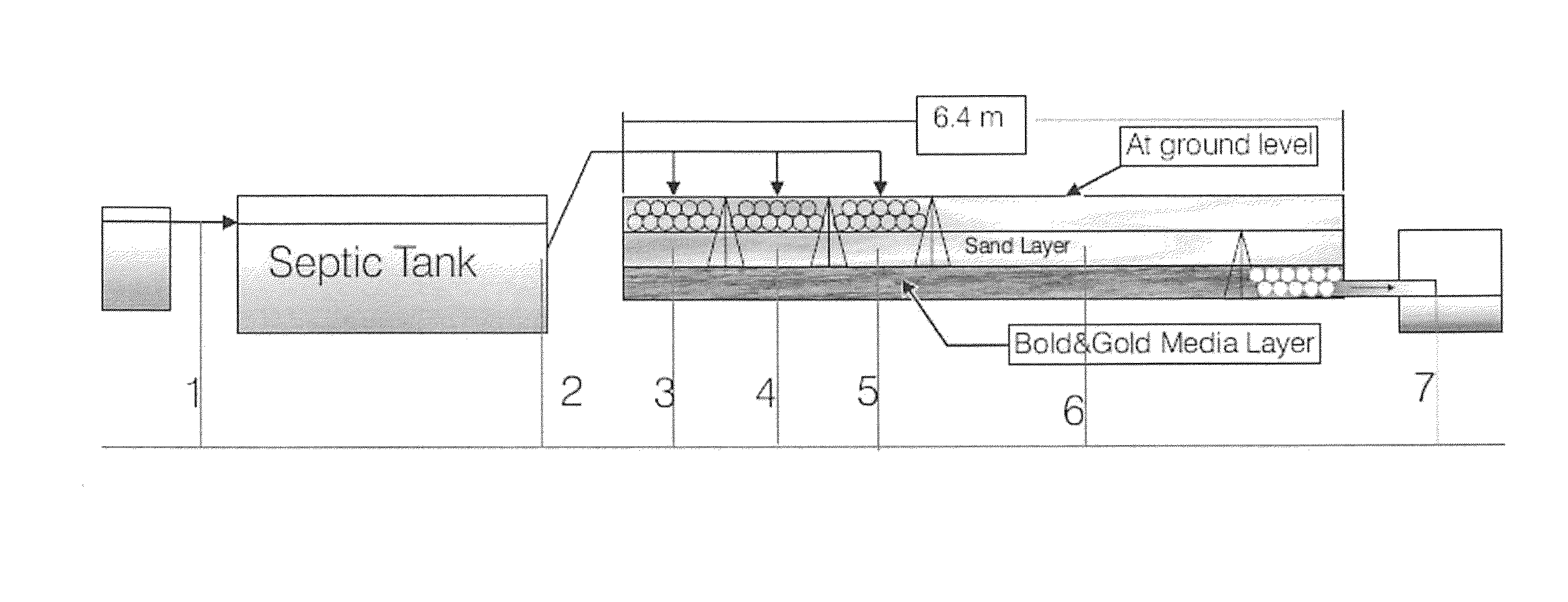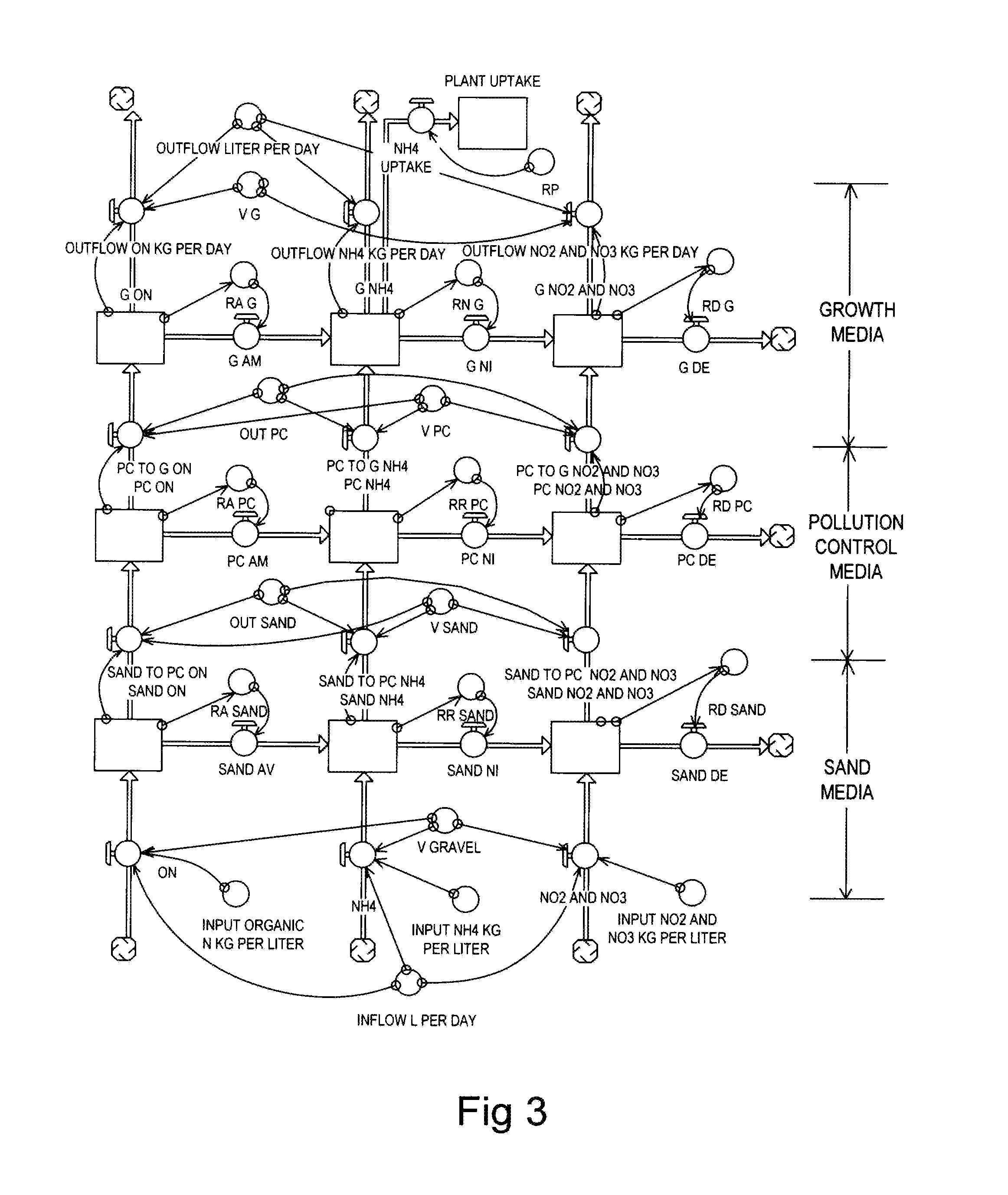Subsurface upflow wetland system for nutrient and pathogen removal in wastewater treatment systems
a wastewater treatment system and subsurface technology, applied in biological water/sewage treatment, water cleaning, multi-stage water/sewage treatment, etc., can solve the problems of reducing the service life of the system, and increasing the maintenance burden of the system, so as to reduce the burden of maintenance and improve the service life , the effect of reducing the cos
- Summary
- Abstract
- Description
- Claims
- Application Information
AI Technical Summary
Benefits of technology
Problems solved by technology
Method used
Image
Examples
Embodiment Construction
[0071]Before explaining the disclosed embodiments of the present invention in detail it is to be understood that the invention is not limited in its application to the details of the particular arrangements shown since the invention is capable of other embodiments. Also, the terminology used herein is for the purpose of description and not of limitation.
[0072]The following is a list of reference numerals used in the description and the drawings to identify components:[0073]100 subsurface upflow wetland[0074]110 inlet pipe[0075]115 outlet pipe[0076]120 gravel layer[0077]130 sand layer[0078]140 pollution control medium layer[0079]150 plant growth medium layer[0080]160 sampling ports[0081]170 plants[0082]180 air inlet port
[0083]A subsurface upflow wetland (SUW) system receives septic tank effluent and was tested up to 454 m3 (120 gallon) per day with each of the four SUW cells treating 30 gallons per day in our study. The septic tank before the SUWs has a size of 1000 gallon per day pr...
PUM
| Property | Measurement | Unit |
|---|---|---|
| temperature | aaaaa | aaaaa |
| temperature | aaaaa | aaaaa |
| hydraulic retention time | aaaaa | aaaaa |
Abstract
Description
Claims
Application Information
 Login to View More
Login to View More - R&D
- Intellectual Property
- Life Sciences
- Materials
- Tech Scout
- Unparalleled Data Quality
- Higher Quality Content
- 60% Fewer Hallucinations
Browse by: Latest US Patents, China's latest patents, Technical Efficacy Thesaurus, Application Domain, Technology Topic, Popular Technical Reports.
© 2025 PatSnap. All rights reserved.Legal|Privacy policy|Modern Slavery Act Transparency Statement|Sitemap|About US| Contact US: help@patsnap.com



